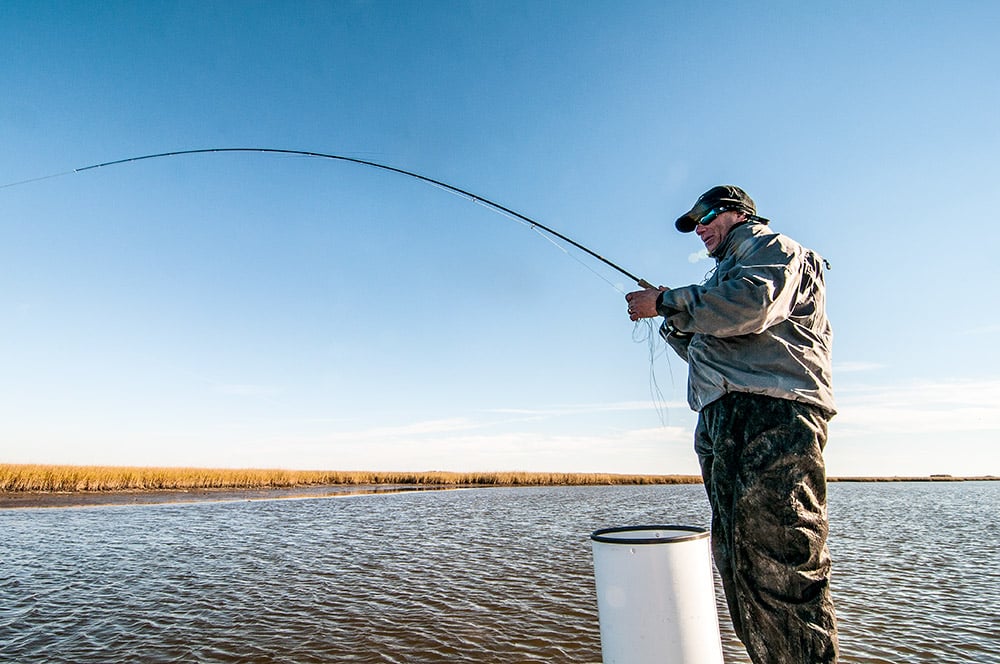
All fly anglers inevitably contend with fly-line management issues. Chances are, even the best of fly rodders will miss a shot at a fish, if the line lays tangled on the deck or is looped around an unsuspecting snag when he or she begins false casting. Novice and expert anglers alike must contend with fly-line management until — immediately following the hook-set — the line has been cleared and is coming directly off the reel.
Doing it poorly is bound to result in missed opportunities, and while it greatly helps to make your boat fly-fishing friendly, here are a few tips and a tools to easily execute the often frustrating chore of managing fly line properly.
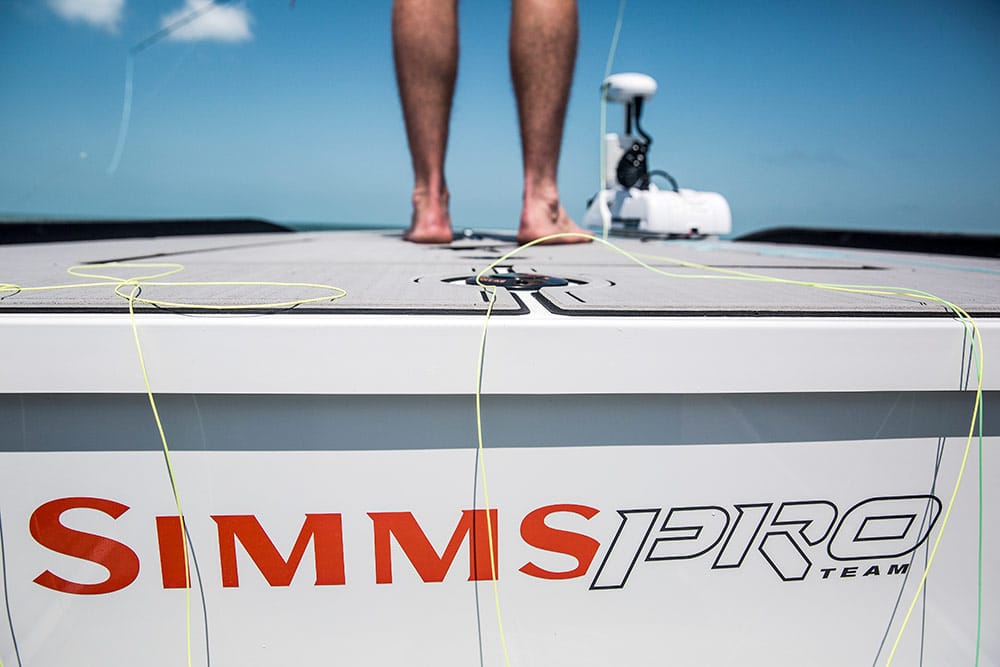
First Things First
Winning the battle against tangles and snags begins with a few simple but often overlooked steps. First, always keep your fly lines clean, and remember to stretch them before use. A dirty line with memory from being stored on the reel is conducive to knotting and tangling, a recipe for disaster both during the cast and when attempting to clear the line during a hooked fish’s initial run.
There are dozens of fly line dressings and cleaning devices on the market, but you must get in the habit of using them regularly. While many fly fishers take the time to clean and stretch their lines at the beginning of each fishing day, there are those who take it one step further and do both after every shot, especially when pursuing permit, big bonefish, or tarpon, all wary and particularly unforgiving species.
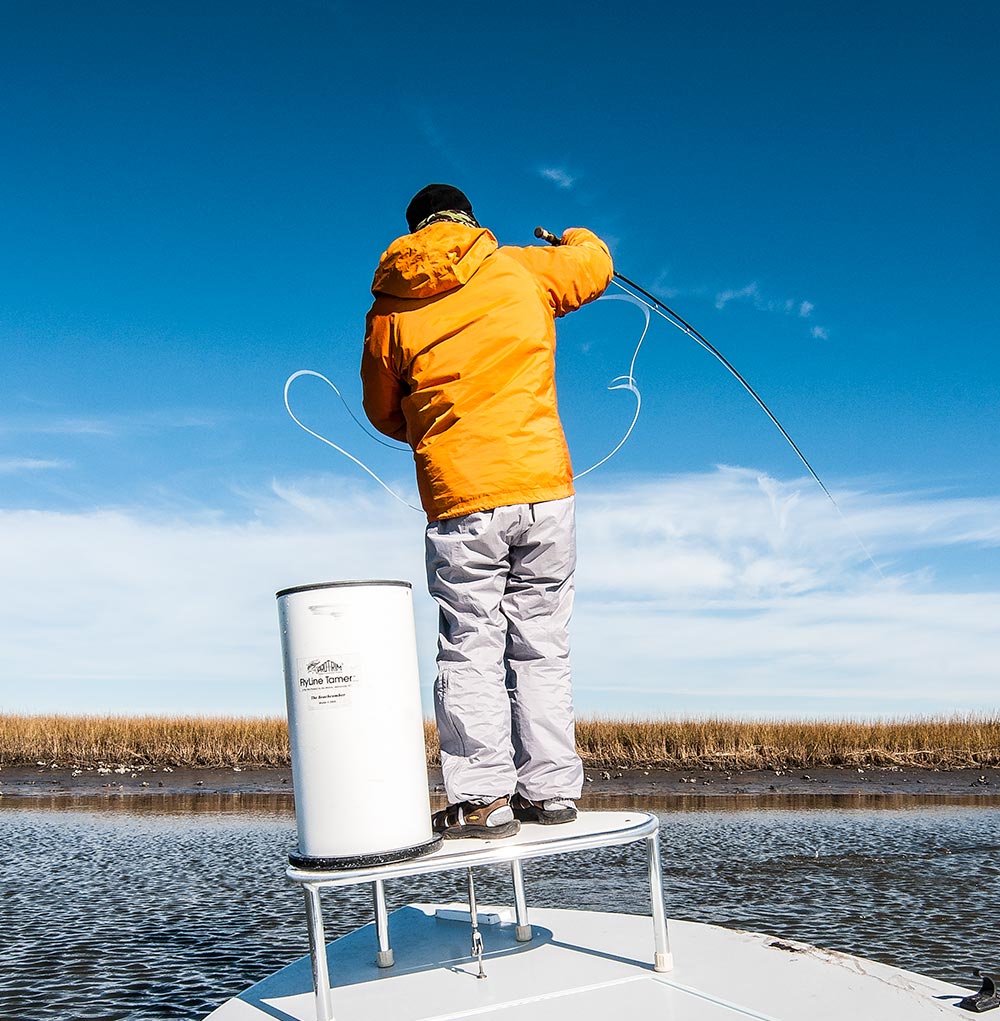
Basic Tools
No matter how calm the wind is and how unhindered you think you’ve laid your line onto the boat’s casting deck, fly lines somehow always manage to wrap around the trolling motor or cooler seat, or catch on tie-down straps, turnbuckles, rod holders, and even shoelaces. Stripping baskets, popular with many shorebound fly rodders, and stripping buckets (like those made by Sea Level, Strip and Feed Research, and Carbon Marine), used by an increasing number of boating anglers, are fantastic line-management tools, but only when used properly.
If you fling a 70-foot bomb to a cruising tarpon, and strip all the way to the boat before the fish refuses to eat, don’t grab the handful of excess line and toss it back in the stripping basket or bucket. If you do that, your next cast will surely fall short due as a tangled bird’s nest, unable to pass the rod guides, brings the line to an early stop. Instead, take the time to make another cast and strip the line back into your basket or bucket. That way the line coils will rest properly at the ready for the next shot.

Welcome Mats
Joe Welbourn of Florida-based Carbon Marine has been developing fly-line management devices for several years. He began out of personal necessity, but quickly realized other fly anglers had similar needs. he wasn’t alone. While his company offers the LineHut, a stripping bucket available in several widths and heights, Welbourn understood that different types of fishing, conditions and fishing platforms called for other types of line-management tools.
Thinking outside the bucket, Welbourn came up with the LineLair, a square or round mat that rests on the deck of a boat and has a series of rounded spikes that prevents loose fly line from wandering. The LineLair’s biggest advantage is that it allows anglers to focus on feeding the fish. Because there’s no bulky bucket encroaching at their side, anglers can strip the fly without worrying about dropping the line back into the container in the process.
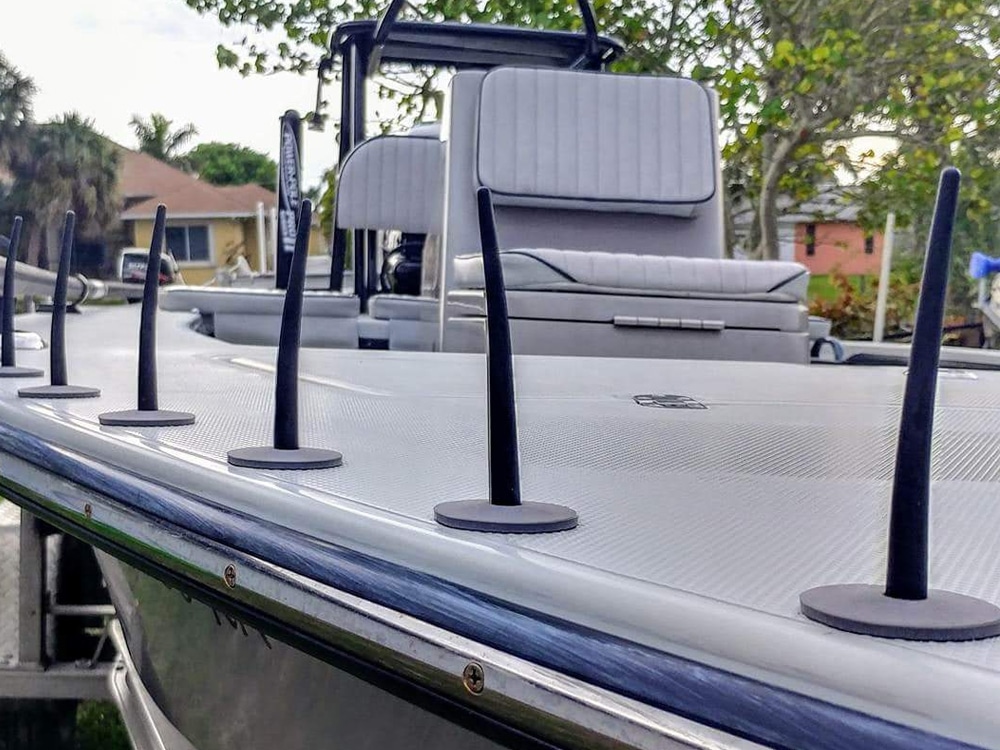
The success of the LineLair led Carbon Marine to introduce the LineLair Pro, an upgraded version also available in a smaller travel size, plus other innovative products like the LineTack Light Fly Line Management Spikes, a kit that includes 12 or 24 single spikes that can be configured around the bow of a boat to keep fly line put and prevent it from sliding over the side and into the water.
Clearing the Line
So now that you’ve made your perfect presentation (unhindered of course), the fish ate, and you set the hook – you still have to manage your line. No matter how clean and stretched your fly line is, nor what type of line management tool you opted to use, when a fish makes its first run, your excess fly line is going to dance all over the place and become extremely vulnerable to catching on something, which is why anglers should be obsessive about keeping the deck clean and uncluttered.
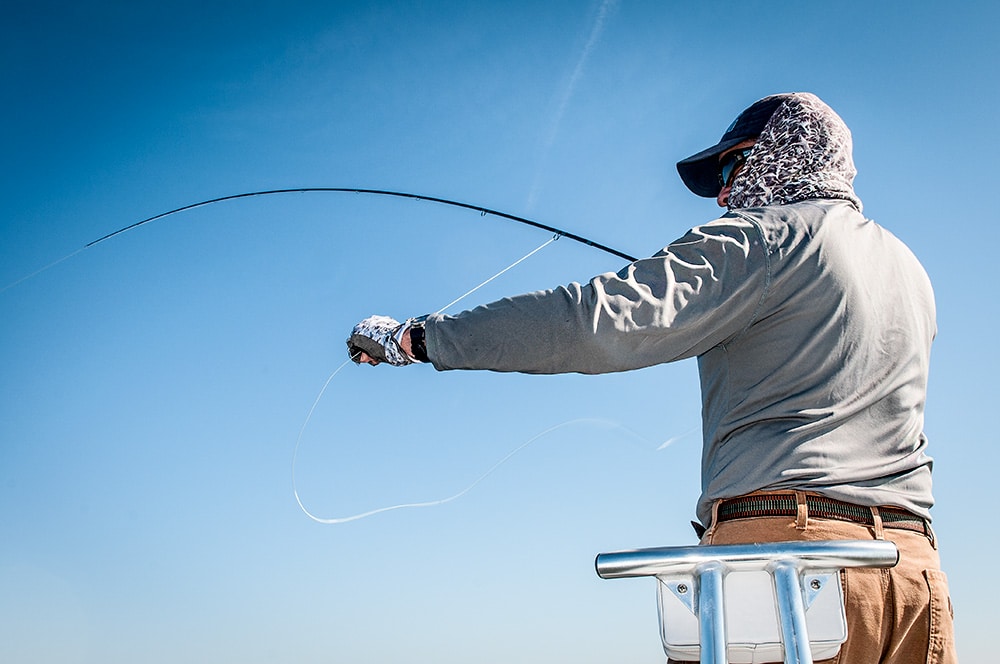
At this point, the best practice is to extend the arm with the hand holding the rod, and keep a firm, but not very tight grip on the fly line with your other hand, doing your best to let it gently slide through your fingers until you’ve cleared all the loose line and you can fight the fish from the reel. Then, and only then, are you free from the woes of fly-line management.









